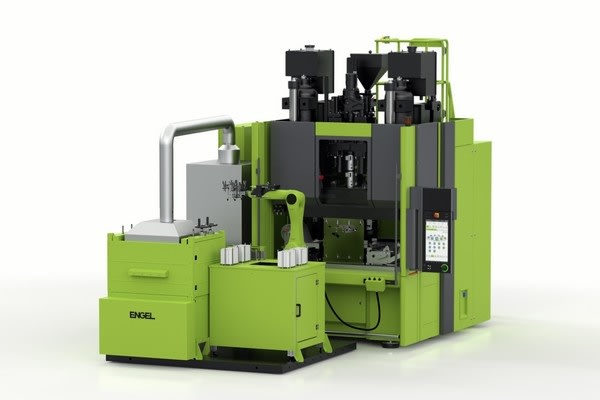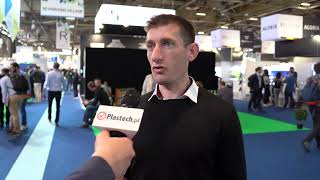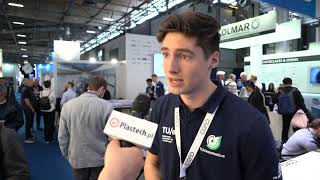Processing of thermoplastic fabrics using extreme thin-wall technology
Another key focus of Engel's stand will be the processing of thermoplastic, continuous fibre reinforced semi-finished parts (thermoplastic fabrics) via the injection moulding process. Engel will use components and videos in Düsseldorf to present an example from the teletronics industry. In the production of notebooks, tablets, smartphones and other hand-held devices, the use of innovative composite materials for housings is key to reducing weight and improving stability. Together with its partners Bond-Laminates (a Lanxess Group company based in Brilon, Germany) and Leonhard Kurz (Fürth, Germany), Engel has succeeded in developing a highly efficient production cell for the manufacture of exceptionally robust housings with high quality surfaces using extreme thin-wall technology. With a wall thickness of only 0.6 mm, the demonstration part reveals completely new possibilities.The highly automated production cell was specifically designed for the material combination of a thermoplastic, continuous fibre reinforced semi-finished part (Tepex) and the IMD film developed and patented by Bond-Laminates and Leonhard Kurz. The system solution incorporates three processing technologies to support the in-mould decoration of thermoplastic composite components in mass production: Engel organomelt for shaping and functionalising thermoplastic fabrics in an injection moulding process, Engel variomelt for optimising surface quality through variothermal mould temperature control and in-mould decoration (IMD) for optical and functional surface finishing directly in the injection mould. At the heart of the production cell is an Engel insert 500V/130 single injection moulding machine, an Engel easix six-axis robot and an infrared oven for heating the thermoplastic fabrics, which was also developed and built by Engel.

What makes the new method special is the fact that the continuous fibre-reinforced, semi-finished thermoplastic material is shaped, overmoulded and given a high-quality surface decoration in a single processing step. To attain a direct material bond between the thermoplastic fabric and the IMD film, Bond-Laminates and Leonhard Kurz further developed the materials, the mould and the technology required to process them, thus paving the way for a high degree of process integration. To achieve a durable and decorated surface finish with the conventional process, composite components must be treated and painted in additional work steps after the injection moulding process. Integrated production has eliminated the need for several work steps.

In the Engel system solution, both the Engel easix multi-axis robot and the IR oven are fully integrated into the CC300 control unit of the injection moulding machine. Therefore the preheating of the semi-finished products can also be centrally controlled from the IMM display. Temperatures and heating times are stored together with the data of the injection moulding process, which simplifies the documentation, evaluation and tracking of the overall process.
Engel IR ovens are characterised by very high thermal homogeneity, with the various heating zones individually defined and regulated. They are available in five sizes, up to a heating surface of 1,110 x 1,610 mm; to give an example, this will facilitate the processing of large semi-finished parts for complete door modules or front ends for the automobile industry.




